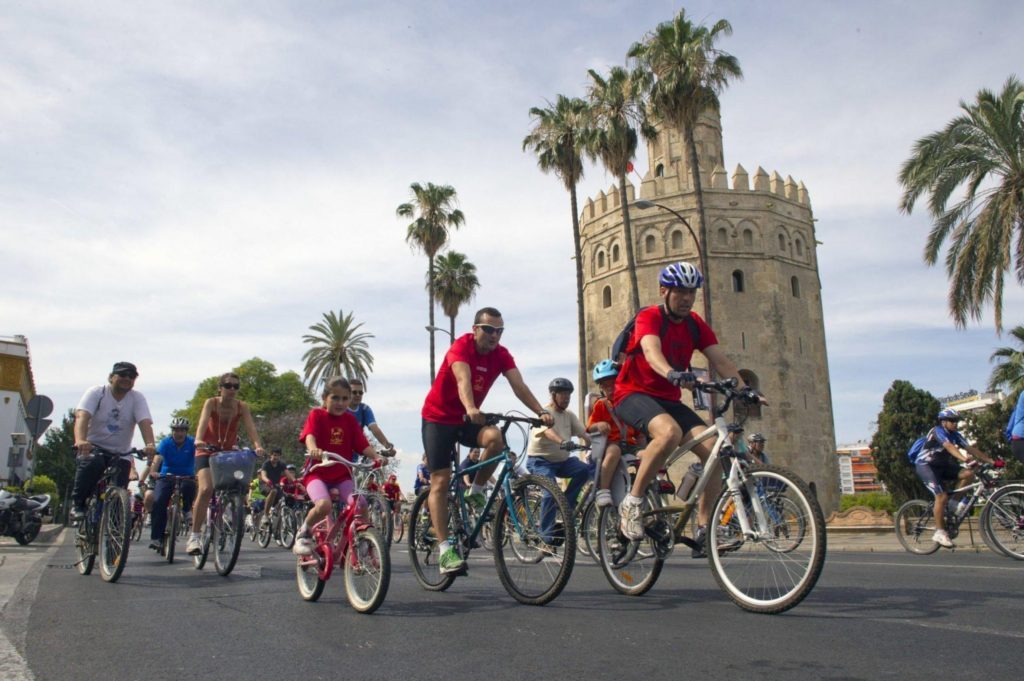During my years studying Architecture and urban planning in Seville, I witnessed the radical changes that a new cycling network brought to the city. Following the recent government initiative to boost cycling in the UK, I would like to share some of the outcomes of the Seville cycling network.
Cycling network | Seville
- 180km (112 miles)of bike paths created around the city at a cost of €35,000,000 or €194,000 per km.
- Bike use prior to 2003 was 0.6% of all trips made, by 2011 this increased to 9% (a 15-fold increase).
- Daily bike trips across the city reached 72,500 by 2011 (Seville has a municipal population of 700,000 people and a well-developed public transport network with underground, trams and buses).
UK government | May 2020
“Far more people will be cycling and walking thanks to plans to boost greener, active transport, launched today in May 2020 by Transport Secretary Grant Shapps.
In May government pop-up bikes lanes with protected space for cycling, wider pavements, safer junctions, and cycle and bus-only corridors will be created in England as part of a £250 million emergency active travel fund – the first stage of a £2 billion investment, as part of the £5 billion in new funding announced for cycling and buses in February. Following unprecedented levels of walking and cycling across the UK during the pandemic, the plans will help encourage more people to choose alternatives to public transport when they need to travel, making healthier habits easier and helping make sure the road, bus and rail networks are ready to respond to future increases in demand.”
This incentive should also mean that not only public transport trips are reduced, but also private transport trips. If we use the Seville case as an example, a whopping 72,500 potential daily car journeys were avoided, which seems a very positive outcome.
The weather factor is also something to consider, with Seville obviously boasting a far warmer climate than the UK, but seeing how commuters in cities like London ride their bikes in all weathers this should give us some reassurance that this is possible across the UK.
I have begun to ride to work recently and, apart from the added health benefits, I was very surprised to see that door to door my journey can be less time consuming than using the bus service (which at rush hour can turn a 20 minute journey into 45 minutes). In addition, the cost to the commuter is less when cycling, or even when taking your bike onto the train for part of the journey (£5/day for a return ticket compared with £7/day on the bus). Whilst riding my bike has, of course, been free and has taken me around 40 minutes for a lovely 8 mile bike ride through the Derbyshire hills between Belper and Derby.
It will be interesting to see whether some of the government’s £2 billion investment can be applied to key commuter routes within Derby and to and from its surrounding settlements.
Fernando Collado Lopez, MArch (Seville) ARB, Architect, Planning & Design Practice Ltd
Main Image: Seville Traveller



